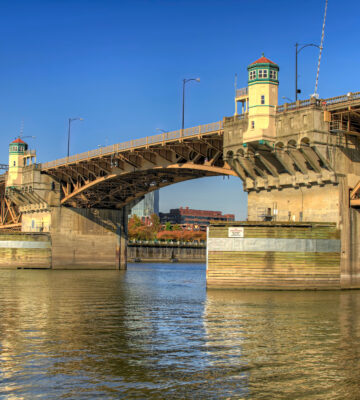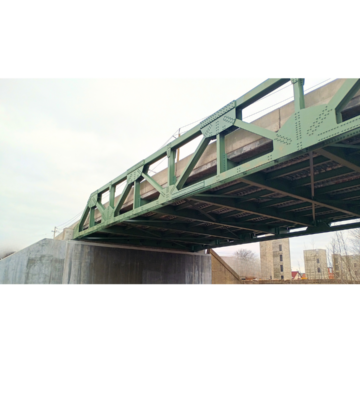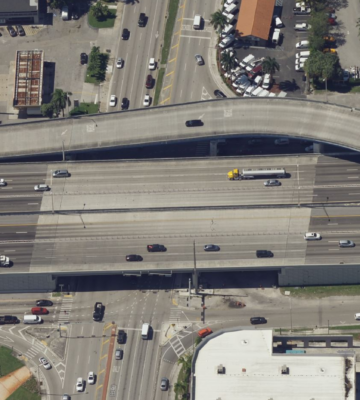The Roosevelt Bridges are twin precast segmental structures, approximately 60 ft. wide and 4500 ft. long, carrying northbound and southbound US Route 1 (SR-5) over the St. Lucie River in Stuart, FL. US-1 is a major north-south artery that connects the City of Stuart with Jensen Beach and the City of Port St. Lucie and has an Average Annual Daily Traffic (AADT) of approximately 60,000 vehicles per day.
On June 16, 2020, during a routine biennial inspection and based on feedback from local partners, inspectors found cracks in Span 1 of the southbound bridge, which necessitated its closure as well as the roadway traversing underneath the bridge (Dixie Highway). Out of caution, the northbound bridge was also closed until a thorough inspection could be performed. Inspections of both bridges determined that the southbound bridge had sustained significant structural damage in Span 1 and would need to remain closed for an extended duration; however, the northbound bridge was deemed safe to reopen with a few minor enhancements. Corven Engineering, an H&H company, was mobilized the following day under emergency conditions. Within days, we inspected and analyzed the bridges, determining that the northbound bridge could reopen to reduced two-way traffic.
The inconvenience posed by the SB bridge closure, weight restrictions, detours, and overall capacity conveyance reduction on US-1 was significant and had far-reaching impacts on the local community. This necessitated “time was of the essence” to complete the repairs needed to reopen the SB Bridge, lift the weight restrictions, and remove the detours. Thus, the Department decided to utilize the Construction Manager/General Contractor (CM/GC) contract delivery method to expedite the repairs.
Corven Engineering was the Engineer of Record for the design of the permanent repairs. Innovative technical concepts were required to accomplish the repairs. The most dramatic of these was the cutting-free and temporary support of the southernmost 70 feet of bridge weighing 600 tons. The staged cutting was accomplished using a wire rope saw and demolition hammers to allow critical utilities in the barriers to remain undamaged in the process. The remaining tendons were then slackened by cutting at the segment joints. This procedure required the continual adjustment of temporary supporting jacks and surveying.
The full scope of work for the project included repairing Span 1 of the southbound bridge, adding provisional post-tensioning tendons in all expansion joint spans (15 spans), and adding tendons in Span 18 of the southbound bridge and Span 3 span of the northbound bridge.




